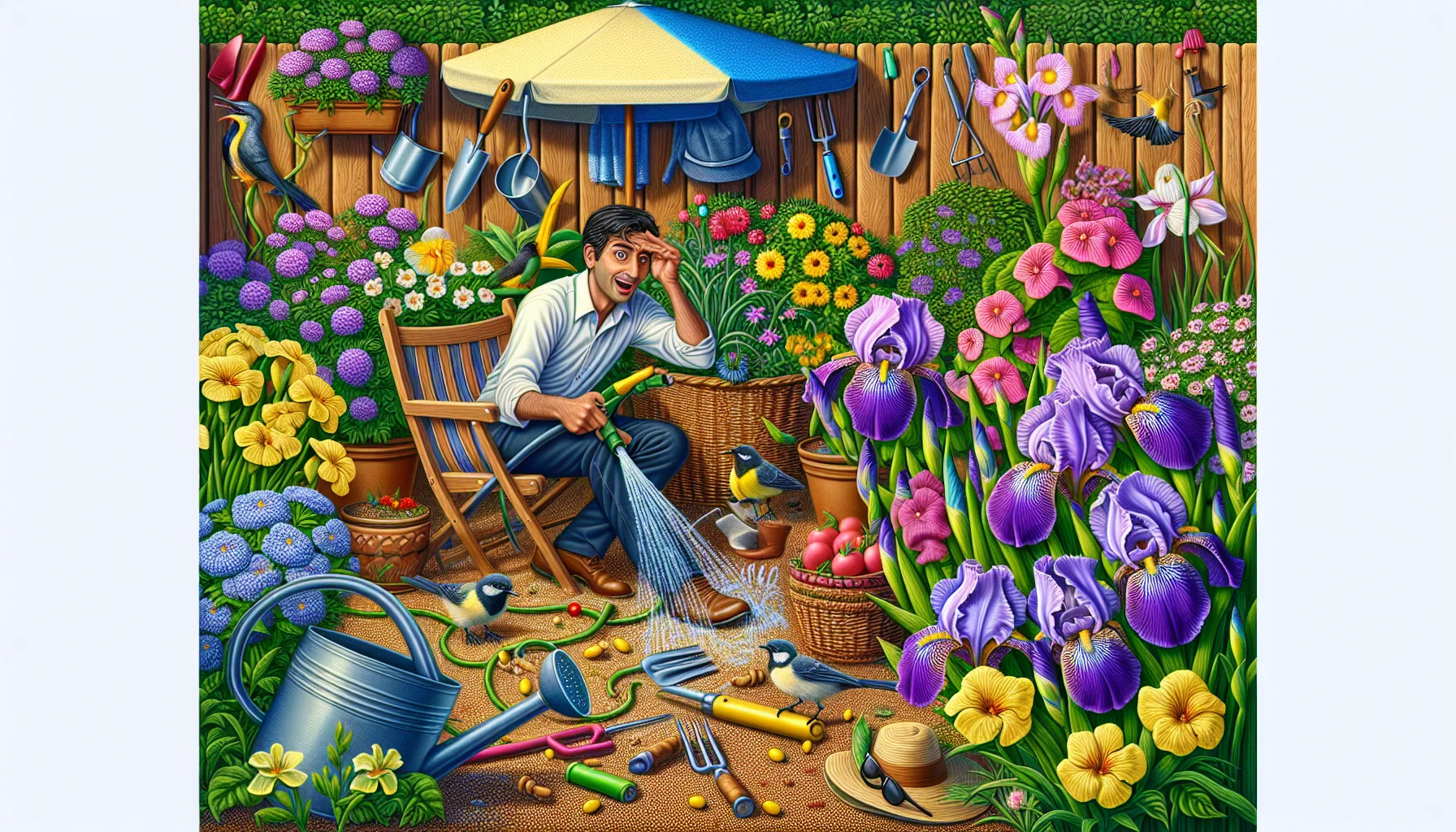Iris flower pictures Quiz
Test Your Knowledge
Question of
The Beauty of Iris Flowers
Iris flowers captivate the hearts of gardeners and flower enthusiasts alike with their stunning beauty and vibrant colors. These perennial plants are celebrated for their unique shape and the wide spectrum of colors they come in, ranging from deep purples and blues to bright yellows and whites. Irises are not only admired for their aesthetic appeal but also for their symbolism, representing wisdom, hope, and trust. Their popularity in gardens can be attributed to their striking appearance and their ability to attract pollinators, adding both visual appeal and ecological benefits to any garden space.
Types of Iris Flowers
- Bearded Iris: Known for their large, showy flowers with soft, "bearded" segments. Colors range from white, yellow, blue, and purple. They typically bloom in late spring to early summer.
- Siberian Iris: These have graceful flowers and slender, grass-like foliage. The flowers come in shades of purple, blue, and occasionally white. They bloom in late spring to early summer.
- Japanese Iris: Characterized by large, flat blooms and a wide range of colors including purples, pinks, and whites. They prefer wet conditions and bloom in early to mid-summer.
- Dutch Iris: Popular in cut flower arrangements, these irises have elongated, elegant blooms in shades of blue, purple, white, and yellow. They typically bloom in late spring.
- Louisiana Iris: Native to the American Gulf Coast, these irises thrive in moist to wet conditions and feature large, flat flowers in a variety of colors. Blooming occurs in late spring to early summer.
- Yellow Flag Iris: Known for its bright yellow flowers, this iris is often found in wetlands. It blooms in late spring to early summer.
- Wild Iris: Also known as the blue flag iris, it has delicate blue to violet flowers, often with a touch of yellow. It prefers moist habitats and blooms in late spring to early summer.
How to Grow Iris Flowers
To successfully grow iris flowers in your garden, it's important to plant them in a spot that receives full sun for at least half the day. They thrive in well-drained soil, so consider raising the beds or incorporating sandy soil to improve drainage if necessary. Plant iris rhizomes shallowly in the ground, with the top of the rhizome slightly exposed, during the late summer to early fall. This timing allows them to establish roots before the winter. Water the plants consistently but do not overwater, as irises do not like to sit in wet soil. After blooming, trim back the flower stalks but leave the foliage in place to allow the plant to gather energy for the next year. Divide the iris clumps every 3-4 years to prevent overcrowding and to promote healthy blooming. With these practices, your iris garden will be vibrant and flourishing.
Iris Flower Care Tips
- Sunlight Requirements: Irises thrive in full sun. Ensure they receive at least 6 to 8 hours of direct sunlight daily.
- Watering: Keep the soil consistently moist, especially during the growing season. Water the plants deeply once a week, but allow the soil to dry out slightly between waterings to prevent overwatering and root rot.
- Soil Conditions: Irises prefer well-draining soil with a slightly acidic to neutral pH. Amend heavy clay soils with compost or peat moss to improve drainage.
Common Pests and Problems
Gardeners who cultivate irises may encounter a variety of challenges, including pests and diseases that can affect the health and beauty of these flowers. Common pests include the iris borer, which tunnels into the leaves and rhizomes, causing significant damage. Aphids and thrips are also frequent visitors that suck sap and can spread viruses. Among diseases, irises are susceptible to bacterial soft rot, which makes the rhizomes mushy and foul-smelling, and fungal diseases like leaf spot and rust, which disfigure the leaves and can weaken the plant over time. Regular monitoring and adopting preventive measures can help maintain the health of iris plants, ensuring their vibrant blooms for seasons to come.
Iris Flowers in Landscape Design
Iris flowers, with their captivating beauty and wide range of colors, offer an exceptional option for enhancing garden designs and landscapes. These versatile blooms can be incorporated in various ways, such as creating vibrant borders along garden paths, being focal points in perennial garden beds, or even naturalizing in water features for a stunning visual appeal. Their distinct shape and colorful petals can add depth and interest to any garden setting, making them a favorite among landscape designers seeking to introduce color, texture, and elegance to outdoor spaces.
Gallery of Iris Flower Pictures
| Flower Type | Color | Blooming Season |
|---|---|---|
| Iris Germanica | Blue and Purple | Spring |
| Iris Sibirica | Deep Blue | Late Spring to Early Summer |
| Iris Reticulata | Yellow and Purple | Early Spring |
| Iris Versicolor | Purple and Yellow | Spring to Summer |
| Iris Ensata | Purple | Early to Midsummer |












